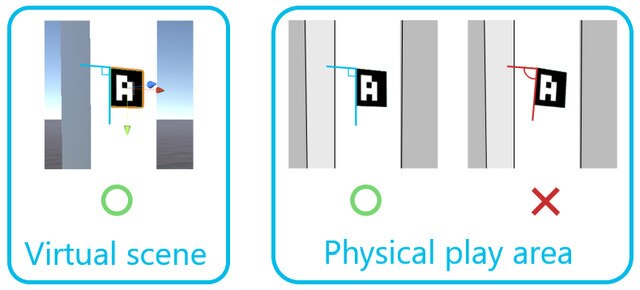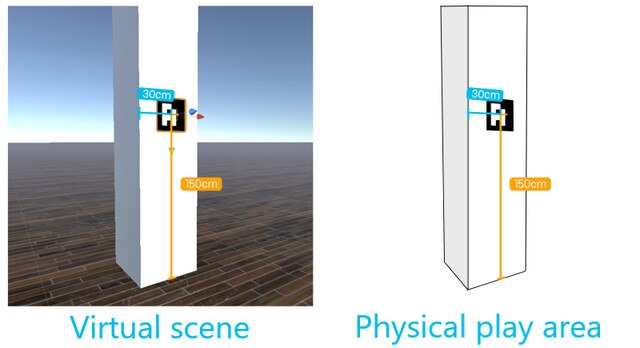-
简介
-
追踪模式
-
ArUco 标记和基于标记的追踪功能
-
基于标记的追踪功能
-
-
基于标记的位置共享设置
-
LBE 模式/LBE 混合模式设置
-
LBE 地图配置
-
基于标记的防漂移设置
-
基于标记的高级重新定位设置
-
基于标记的场景对齐设置
-
VR 模拟器模式设置
-
其他服务
-
更多功能
配置虚拟场景中 ArUco 标记的位置 (Unity)
在 Unity 中创建一个虚拟标记,并将其放置在与 ArUco 标记在物理环境中位置相对应的位置。
- 在 Unity 中,打开计划与游玩区对齐的虚拟场景。
-
创建一个虚拟标记,并将其放置在计划放置物理标记的场景中。确保标记处于正确位置,并按下图所示对齐。
重要:
如果标记的轴与图片中显示的不一致,您的场景可能无法与物理环境正确对齐。

记住要从标记的中心计算位置。确保高度和到最近边界的距离相同。

- 记录位置数据,包括平行传输和四元数旋转。在创建 ArUco 标记时,您需要使用这些数据。
-
使用配置标记 ID 和字典 API 配置虚拟标记的 ID 和字典。请参见基于标记的场景对齐 API(一体机)。
提示:
使用保留对齐 API 可在更改环境设置或切换虚拟现实应用程序时保持对齐结果不变。有关详细信息,请参见基于标记的场景对齐 API(一体机)。
此内容对您有帮助吗?
是
否
提交
谢谢!您的反馈可以帮助其他人了解最有用的信息。